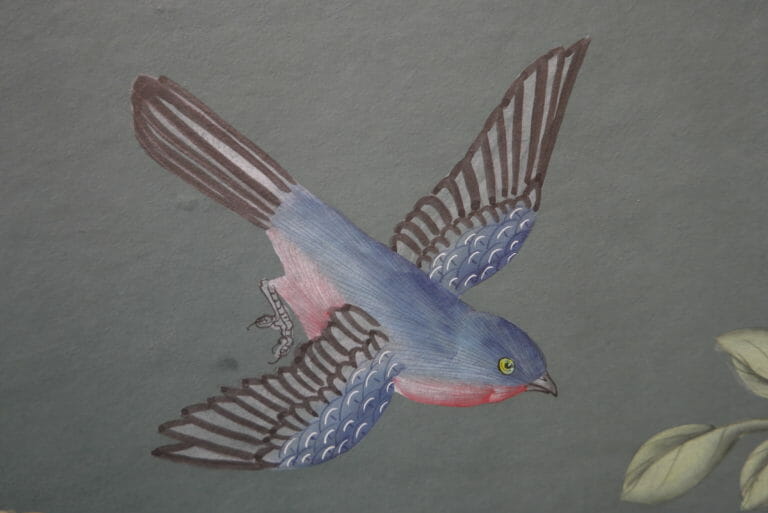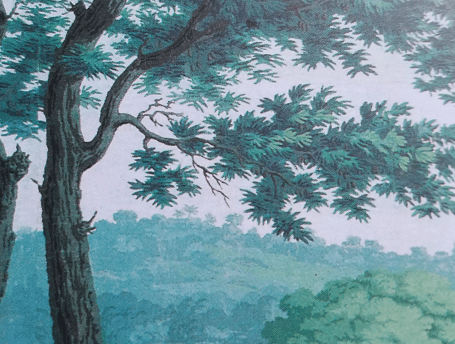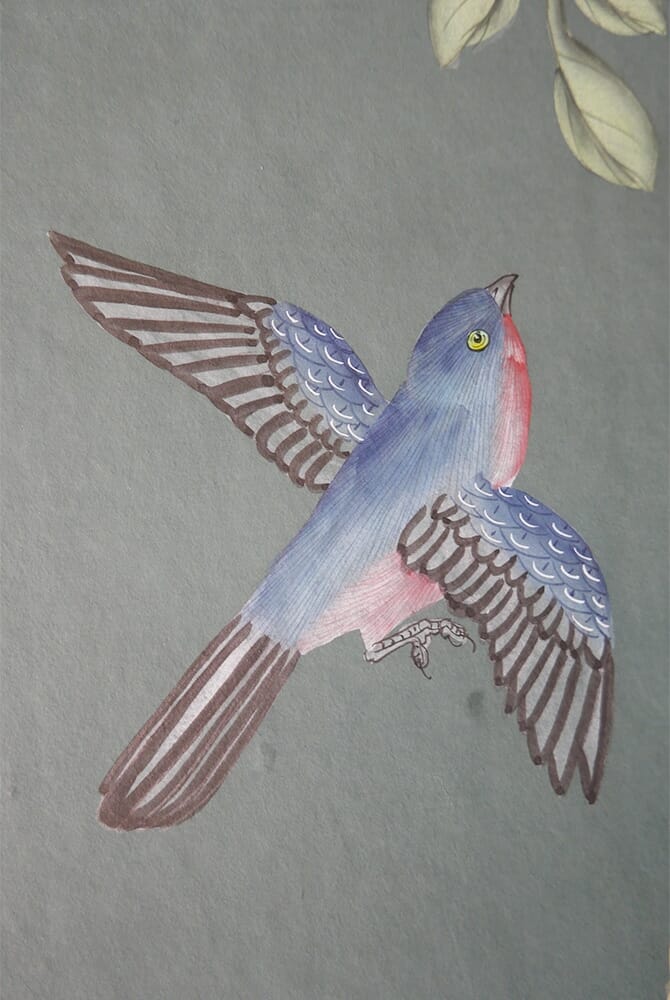How to Distinguish between Handpainted and Block Printed Murals
Two methods of creating wallpaper designs have dominated the luxury market for ages. Both are based on centuries-old techniques. Both require significant time and highly-skilled labor to complete. Both are valued as works of art, worthy of display in fine museums. So what’s the difference? It’s all in the look and feel.
The Artist's Hand
Let’s start with hand-painted wallpapers, which were introduced to Europeans by the Chinese in the late 1600s. These papers were huge, painted by a team of highly-trained artists. Each artist specialized in different elements of the scene—an expert mountain painter, an expert tree painter, an expert bird painter. They were also expert copyists, often working from sets of master images. It wasn’t so much of an artistic collaboration as it was a highly efficient means of production. Think a bit like Henry Ford’s assembly line.
As the UK’s National Trust puts it:
“These wallpapers, and this way of producing them, was part of the Chinese ‘professional’ painting tradition, which specialized in detailed, highly finished paintings for decorative purposes. And while professional painters could be extremely skilled, they did not have the same status and prestige as the ‘scholar amateur’ painters, who tended to work in more monochrome, semi-abstract styles and focus on literary and spiritual themes.”
Most hand-painted wallpapers on the market today still use this method, and the results are incredibly attractive. Looking at these papers up close, you can admire the beautiful brushwork, the vibrant colors and subtle gradients of the paints, the particular style that could only be achieved by a human hand. They also usually offer a pretty wide range of customization that wouldn’t be possible with a printed medium.

What these works tend to lose in their feel is the distinct character, mood, and atmosphere that a single artist can convey. We can easily distinguish between a Renoir and a Monet, though the two were close friends and worked with each other often. An individual artist’s temperament tends to shine through their work. But what these luxury papers may lack in personality they make up for in consistency, a much-valued trait when it comes to mass production.
The Block's Print
The European’s method of choice was the woodblock print. Artisans carved designs into blocks of wood, applied ink or paint to the raised surface, and pressed it onto a sheet of paper like a big stamp. In the earliest examples, the craftsmen used the blocks to print dark outlines, then filled them with color by hand. But as the printing process improved, they began using separate blocks to apply the colors layer by layer.
What began as a fairly crude endeavor quickly transformed into a highly precise craft. The most complex designs required hundreds of blocks and a careful hand to print them onto rolls of paper. Detailed color recipes were also required to reproduce the correct hues. New designs were expensive and time-consuming to create, but once completed they could be reused indefinitely.
The block-printing process was highly conducive to the production of repeating patterns, like this design by William Morris which you can see demoed here:
Nevertheless, luxury manufacturers like Dufour et Cie (now defunct) and Zuber developed impossibly detailed scenic murals depicting historical events or panoramas of exotic locales. The technical mastery these companies attained is readily apparent in Dufour’s masterpiece, Sauvages de la Mer Pacifique or Zuber’s famous El Dorado.

Aside from the sky, which is painted with a large broom-like brush to produce a gradient, every color you see is very flat. The lines between hues are ultra crisp, creating little compartments of color that don’t mix or blend. The effect is most apparent in the backgrounds, where only a few colors are layered atop one another in large swaths. The look is precise, distinct, and essentially timeless.
Fewer manufacturers are producing block-printed wallpapers today due to their complexity, and those that do primarily rely on huge archives of woodblock designs that have been in use for centuries. The designs are also fairly difficult to customize outside of the colors used to create them. Still, block-printed murals remain a popular choice among interior decorators.

